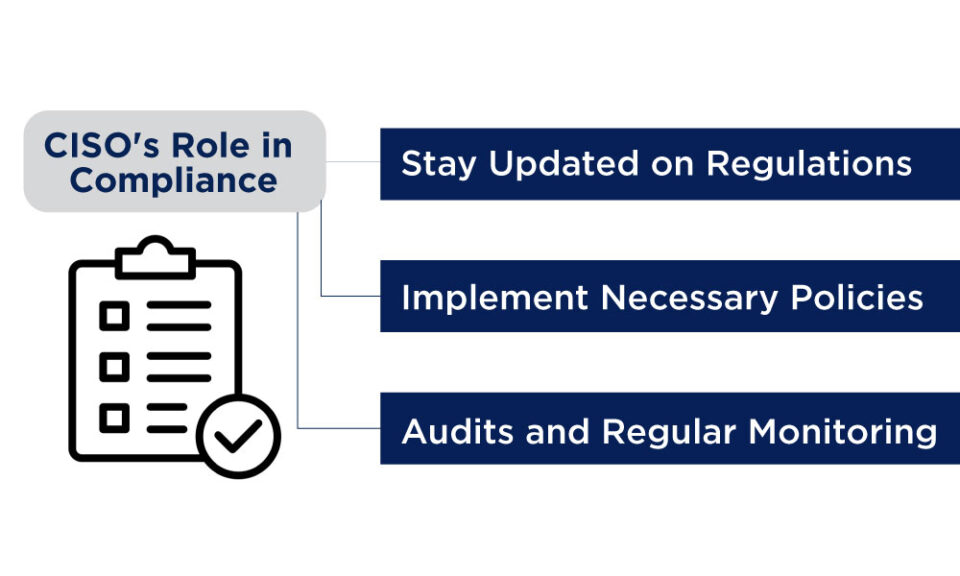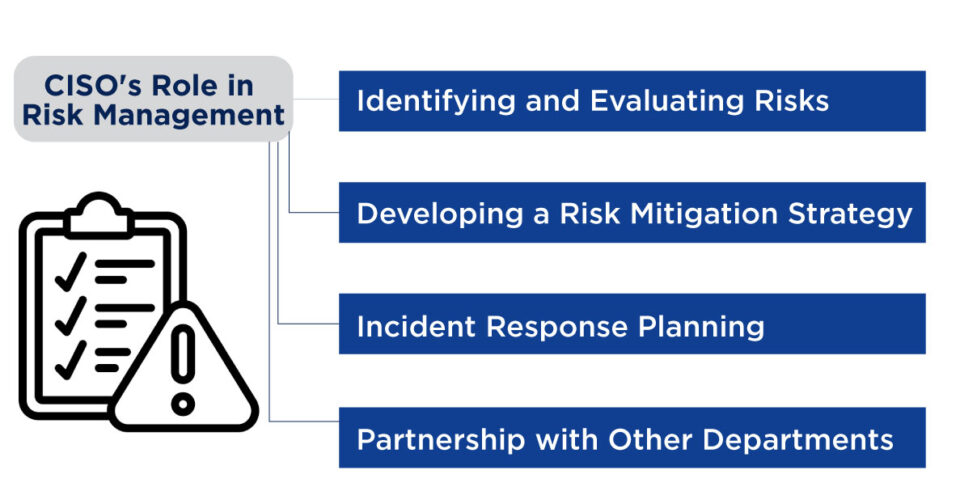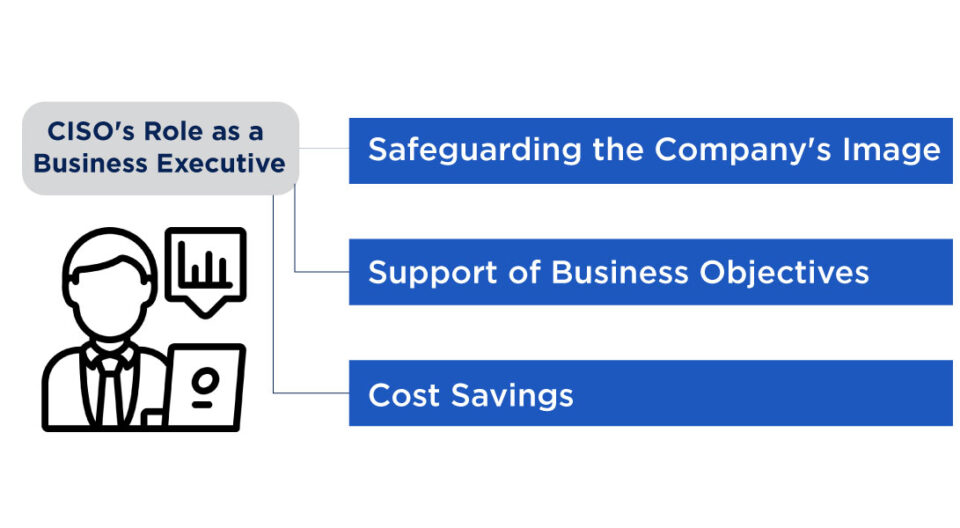In today's world, businesses need to protect sensitive information and ensure they are operating within the law, as data breaches and cyber threats are a constant concern. This is where the Chief Information Security Officer comes in. CISO's role has changed with time.
CISO not just stops hackers; it also makes sure that the company follows the rules and handles the risks. But how does a chief information security officer actually add value to these aspects? Let's understand the concept.
Understanding Compliance and Risk Management
Before we dive into the chief information security officer's role, let’s understand the terms “compliance” and “risk management.”
Compliance means following laws, rules, and industry standards. Like in healthcare, for example, businesses must comply with the Health Insurance Portability and Accountability Act (HIPAA) to ensure that patients' data is protected.
Risk Management is essentially the process of identifying existing risks. For example, security breaches and implementing steps to minimize or eliminate them. Looking at the concept of cybersecurity, it essentially encompasses assessing risks to sensitive data and figuring out how to minimize those risks using controls.
CISO's Role in Compliance
The biggest task of a chief information security officer is to make sure the company follows all the necessary rules and regulations, a task that can be pretty complicated because of the ever-changing nature of cybersecurity laws. A chief information security officer must:

a) Stay Updated on Regulations
Regulations vary across industries, countries, and even regions. For example, the General Data Protection Regulation (GDPR) governs data protection in the European Union, while the Payment Card Industry Data Security Standard (PCI DSS) applies to businesses that handle credit card information.
A chief information security officer must be constantly updated on these regulations, ensuring that the company complies with the most recent laws and requirements.
b) Implement Necessary Policies
Once the chief information security officer understands the regulations, they need to work and implement policies to ensure compliance. This includes creating clear guidelines for the handling of sensitive data, employee training programs, controls for access, and standards for data encryption.
Such policies protect the organization from legal penalties and build trust with customers and clients that depends on the company to keep their information protected.
c) Audits and Regular Monitoring
Compliance is an ongoing process. A chief information security officer must oversee regular audits of the company’s IT systems and processes to ensure that they are in line with industry standards and regulations. By monitoring security systems and conducting internal reviews, the officer can identify gaps and take corrective action before an issue becomes a major problem.
CISO’s Role in Risk Management
Another domain where this officer plays a vital role is risk management. Cyber threats have been in a constant evolution, so companies must also take proactive steps to safeguard their data and networks. Here is how they contribute:

a) Identifying and Evaluating Risks
A chief information security officer begins with a detailed risk assessment. A risk assessment involves the identification of possible threats to the data, networks, or systems used by the company. These risks may assume various forms, from cyberattacks to natural catastrophes or even to insider threats.
After identifying them, the chief information security officer establishes a score for every risk, detailing its likely occurrence and potential impact, which aids in prioritizing what needs to be addressed first.
b) Developing a Risk Mitigation Strategy:
With identification and assessment of the risk, the chief information security officer develops a plan to mitigate the identified risks. This may include the installation of firewalls, encryption, intrusion detection systems, and even putting up physical security measures such as access control to data centers. Layers of security mean difficulty in penetration for attackers to access critical systems.
c) Incident Response Planning
In case of cyberattack or data breach, the chief information security officer should be prepared with an incident response plan indicating what to do when a breach has been done. This includes how to contain the breach, how to recover systems and data, and whom to notify about the breach.
Thus, a well-prepared chief information security officer will enable the company to act fast and minimize damage during an incident.
d) Partnership with Other Departments
Risk management is not the IT department's job alone. A chief information security officer is expected to collaborate with the departments, most notably legal, human resources, and operations, to ensure that the risks are mitigated across the organization.
The legal group may support ensuring that the organization complies with its obligations under data privacy laws, or even the human resources department may facilitate management of insider threats through further training and checks of employees' backgrounds.
The CISO as a Business Executive
While security is the main responsibility of this officer, their activities go way beyond technical aspects. A chief information security officer is also a business leader. According to an October 2024 report, over the past decade, chief information security officers have typically reported to the CIO. However, 20% of decision-makers now say their CISOs report directly to the CEO, reflecting increased trust and influence.
Their role in compliance and risk management is crucial to the successful success of a company for the following reasons:

a) Safeguarding the Company's Image
A company’s reputation may get damaged if it is found to be non-compliant or experiences a severe security breach. A CISO helps protect that reputation by ensuring that the implemented security measures and compliance standards are met. That builds trust with customers, investors, and other stakeholders by showing that the company is committed to protecting sensitive information.
b) Support of Business Objectives
By managing the risk, a chief information security officer makes sure that the business is focused on achieving its core goals. For example, if a company is working on expansion into new markets, the chief information security officer ensures that the data protection regulations of those regions are followed. This allows the business to innovate and grow without constantly worrying about potential security or compliance issues.
c) Cost Savings
Although risk management is expensive to initiate, it can save the company a lot in the long run. Preventing data breaches, saving money in fines for non-compliance, and reducing the impact of threats are all reduced by a chief information security officer. They often collaborate with other leaders to create cost-effective security solutions where safety measures balance safety and budget.
Summing Up!
A chief information security officer plays an important role in serving both compliance and risk management. They should ensure the company stays compliant with regulations that are constantly changing and help proactively manage risks. By staying ahead of threats, establishing policies, and collaborating with other departments, a CISO protects a company's data and grows with it to greater success.
The CISO’s job is challenging in the digital world, but its contributions in securing a business's future are invaluable. For more such informative blogs, visit us at WisdomPlexus!
Recommended For You:




